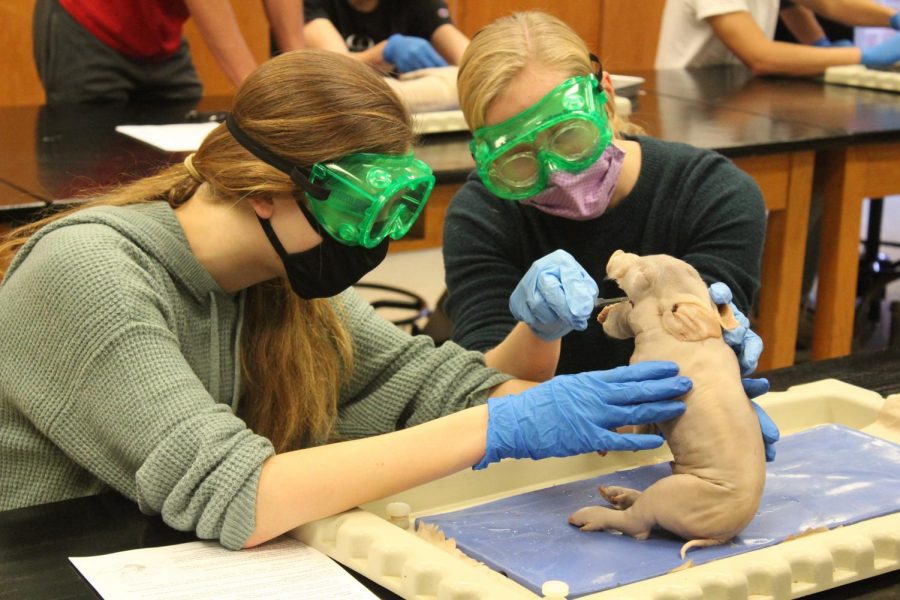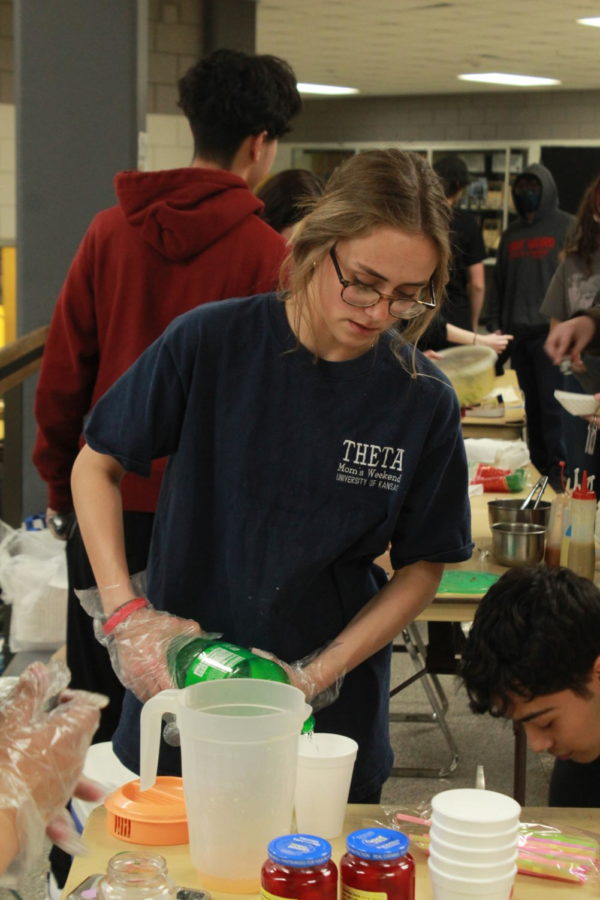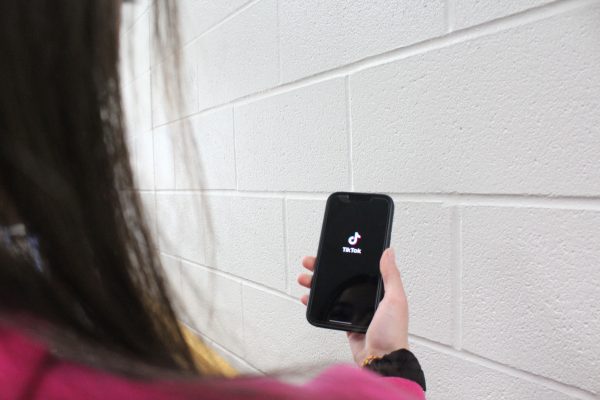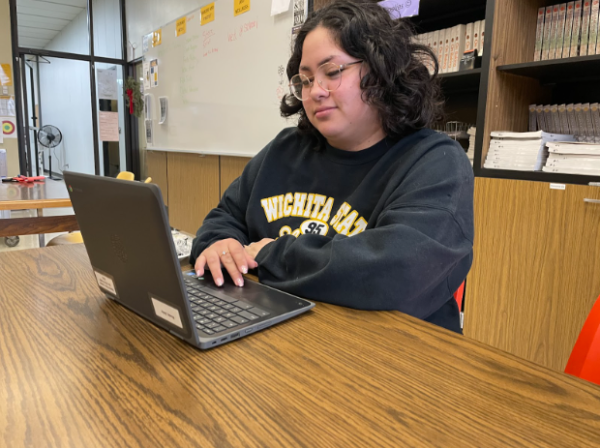Anatomy and Physiology classes dissect fetal pigs
Juniors Lauren Anton and Madelynn Hamm examine their fetal pig before dissection.
January 12, 2021
Dissection is nothing new to Fred Schmidt’s Anatomy and Physiology class. Schmidt’s students spent the first week of classes back after winter break, Jan. 4-8, dissecting fetal pigs. The fetal pig lab is done every year in his class however due to the 4 by 4 schedule it was done much earlier than in previous years. Earlier in the school year the class dissected pig hearts, cow eyes and sheep brains.
The main objective of Anatomy and Physiology classes are to focus on the limits, functions and structure of the human body according to Stanford University. At NHS, Anatomy and Physiology is offered to students that have passed prerequisite courses of Honors Biology and Honors Chemistry I or Biology, Chemistry I and obtain a C or higher in Human Body Systems.
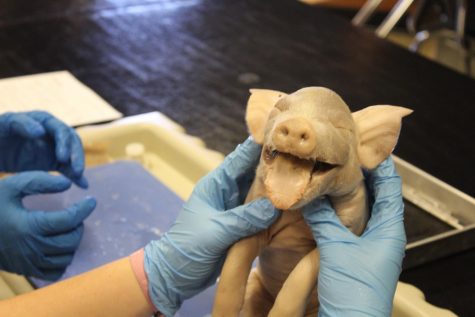
The fetal pig dissection assignment is one that students are expected to participate in, although not required to be the main dissector, in order to pass the class. Junior Jennifer Rubio said she learned a lot about the anatomy of fetal pigs while participating in the dissection.
“I learned about the structure of the pig and the several layers it has protecting [it’s] bones,” Rubio said. “The stomach of the pig was actually still inflated so we had to make a small incision for the liquid and waste to come out. It was very interesting to see how certain blood vessels lead to certain places. [The dissection] was more of seeing and identifying parts of the anatomy rather than learning the physiology.”
According to Goshen College, fetal pigs share a variety of muscles with humans. Schmidt said that he prefers using pigs because of these many similarities to humans, as well as being more cost effective than other options. Pigs range in price depending on size and quantity but are approximately $5-20. Class sets cost on average $120. The pigs can be obtained from a variety of different biology product websites but are usually obtained through a website called BiologyProducts at NHS.
“[The class] used cats before I was teaching here,” Schmidt said. “I chose the fetal pig because of the price. It is a lot cheaper than a cat. The fetal pig also has [more of] the same internal organs as humans, though the bone structure is different. Many college Anatomy and Physiology programs use the fetal pig or the cat so it is good practice for the students.”
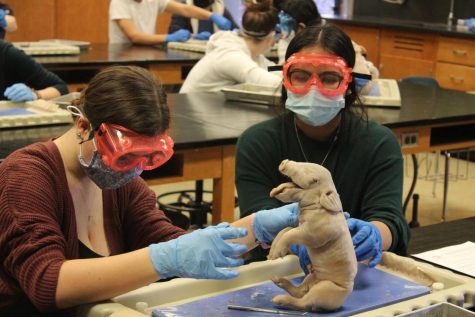
Anatomy and Physiology classes are the building blocks of a medical practice according to the Complete University Guide. Due to the COVID-19 pandemic, students were given a more condensed version of the assignment in Schmidt’s class. Typically students would spend more than two days on the dissection but due to the hybrid schedule and COVID-19 that was not possible this year. Rubio says she would definitely do the dissection again if available and that she was very interested in the process.
“I was never uncomfortable,” Rubio said. “I found it interesting and I liked knowing what I was looking at and what I was looking for. I would most definitely do this assignment again. It’s so interesting and everyone’s pig was slightly different.”

